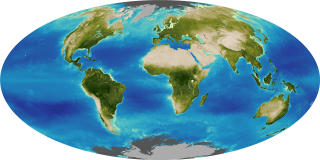We don’t just study climate. We act on it.
NASA collects data to show how our climate is changing from both natural causes and human activities, from documenting impacts on ice sheets, sea level, and Arctic sea ice to monitoring vegetation health and freshwater movement. We are putting decades of research, technology, and innovation to work to improve people's lives on our home planet.

Turn Supermoon Hype into Lunar Learning
Supermoons get lots of publicity from the media, but is there anything to them beyond the hype? If the term “supermoon” bothers you because it’s not an official astronomical term, don’t throw up your hands. You can turn supermoon lemons…

Sols 4304-4006: 12 Years, 42 Drill Holes, and Now… 1 Million ChemCam Shots!
Earth planning date: Friday, Sept. 13, 2024 Today, I need to talk about ChemCam, our laser and imaging instrument on the top of Curiosity’s mast. It one of the instruments in the “head” that gives Curiosity that cute look as…

Sols 4302-4303: West Side of Upper Gediz Vallis, From Tungsten Hills to the Next Rocky Waypoint
Earth planning date: Wednesday, Sept. 11, 2024 The rover is on its way from the Tungsten Hills site to the next priority site for Gediz Vallis channel exploration, in which we plan to get in close enough for arm science…

NASA Airport Throughput Prediction Challenge
The Digital Information Platform (DIP) Sub-Project of Air Traffic Management – eXploration (ATM-X) is seeking to make available in the National Airspace System a variety of live data feeds and services built on that data. The goal is to allow…

NASA’s Artemis II Crew Uses Iceland Terrain for Lunar Training
At first glance, it seems like a scene from an excursion on the Moon’s surface…except the people are in hiking gear, not spacesuits.

Hubble Examines a Spiral Star Factory
This NASA/ESA Hubble Space Telescope image features a spiral galaxy in the constellation Virgo named NGC 5668. It is relatively near to us at 90 million light-years from Earth and quite accessible for astronomers to study with both space- and…

Printed Engines Propel the Next Industrial Revolution
Efforts to 3D print engines produce significant savings in rocketry and beyond

NASA Moon to Mars Architecture Art Challenge
NASA wants you to visualize the future of space exploration! This art challenge is looking for creative, artistic images to represent NASA’s Moon to Mars Architecture, the agency’s roadmap for crewed exploration of deep space. With NASA’s Moon to Mars Objectives in…

NASA to Develop Lunar Time Standard for Exploration Initiatives
NASA will coordinate with U.S. government stakeholders, partners, and international standards organizations to establish a Coordinated Lunar Time (LTC) following a policy directive from the White House in April. The agency’s Space Communication and Navigation (SCaN) program is leading efforts…

NASA’s Webb Peers into the Extreme Outer Galaxy
Astronomers have directed NASA’s James Webb Space Telescope to examine the outskirts of our Milky Way galaxy. Scientists call this region the Extreme Outer Galaxy due to its location more than 58,000 light-years away from the Galactic Center. (For comparison,…

The Marshall Star for September 11, 2024
Starship Super Heavy Breezes Through Wind Tunnel Testing NASA and its industry partners continue to make progress toward Artemis III and beyond, the first crewed lunar landing missions under the agency’s Artemis campaign. SpaceX, the commercial Human Landing System (HLS) provider for…

NASA Finds Summer 2024 Hottest to Date
The agency also shared new state-of-the-art datasets that allow scientists to track Earth’s temperature for any month and region going back to 1880 with greater certainty. August 2024 set a new monthly temperature record, capping Earth’s hottest summer since global…

The Next Full Moon is a Partial Lunar Eclipse; a Supermoon; the Corn Moon; and the Harvest Moon
The next full Moon will be Tuesday, September 17, 2024, at 10:35 PM EDT. The Moon will appear full from Monday evening through Thursday morning.

NASA Remembers Sept. 11
The attacks of Sept. 11, 2001 were a national tragedy that resulted in a staggering loss of life and a significant change in American culture. Each year, we pause and remember. Beyond honoring the Americans who died that day, NASA also assisted…

9 Phenomena NASA Astronauts Will Encounter at Moon’s South Pole
Out-of-this-world phenomena NASA astronauts will experience at the Moon's south polar region.

NASA Scientists Re-Create Mars ‘Spiders’ in a Lab for First Time
Tests on Earth appear to confirm how the Red Planet’s spider-shaped geologic formations are carved by carbon dioxide. Since discovering them in 2003 via images from orbiters, scientists have marveled at spider-like shapes sprawled across the southern hemisphere of Mars.…

Air Traffic Management – eXploration (ATM-X) Description
As the aviation industry evolves, new air vehicles and operators enter the airspace. NASA is working to ensure these new diverse operations can be safely integrated into the current airspace. This includes providing research on how traditional and emerging aircraft operations…

Gateway Space Station in 3D
Immerse yourself in the future of deep space science exploration and download a 3D model of Gateway. Click, drag, and explore the exterior of the lunar space station from multiple angles. International teams of astronauts will use Gateway, humanity’s first…

Margin’ up the Crater Rim!
To conclude its exploration of the mysterious margin unit before it ascends the rim of Jezero Crater, Perseverance made one last stop this past week to investigate these strange rocks at “Eremita Mesa.” Since beginning its steep drive up the…

Astronaut Frank Culbertson Letter from September 11, 2001
Editor’s Note:The following is the text of a letter from Expedition Three Commander Frank L. Culbertson (Captain, USN Retired), reflecting on the events of September 11. September 12, 2001; 7:34 p.m. I haven’t written very much about specifics of this…




